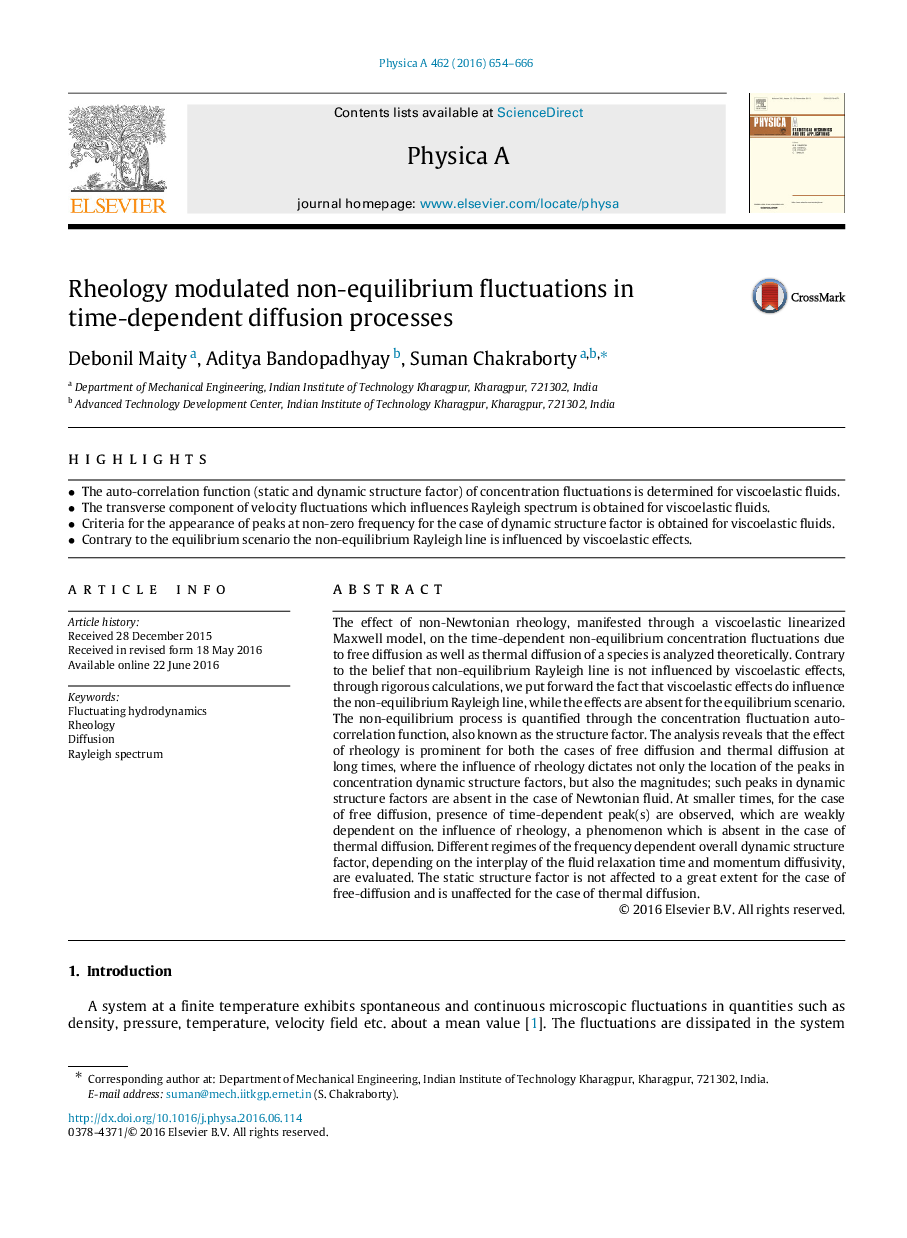| Article ID | Journal | Published Year | Pages | File Type |
|---|---|---|---|---|
| 7376852 | Physica A: Statistical Mechanics and its Applications | 2016 | 13 Pages |
Abstract
The effect of non-Newtonian rheology, manifested through a viscoelastic linearized Maxwell model, on the time-dependent non-equilibrium concentration fluctuations due to free diffusion as well as thermal diffusion of a species is analyzed theoretically. Contrary to the belief that non-equilibrium Rayleigh line is not influenced by viscoelastic effects, through rigorous calculations, we put forward the fact that viscoelastic effects do influence the non-equilibrium Rayleigh line, while the effects are absent for the equilibrium scenario. The non-equilibrium process is quantified through the concentration fluctuation auto-correlation function, also known as the structure factor. The analysis reveals that the effect of rheology is prominent for both the cases of free diffusion and thermal diffusion at long times, where the influence of rheology dictates not only the location of the peaks in concentration dynamic structure factors, but also the magnitudes; such peaks in dynamic structure factors are absent in the case of Newtonian fluid. At smaller times, for the case of free diffusion, presence of time-dependent peak(s) are observed, which are weakly dependent on the influence of rheology, a phenomenon which is absent in the case of thermal diffusion. Different regimes of the frequency dependent overall dynamic structure factor, depending on the interplay of the fluid relaxation time and momentum diffusivity, are evaluated. The static structure factor is not affected to a great extent for the case of free-diffusion and is unaffected for the case of thermal diffusion.
Related Topics
Physical Sciences and Engineering
Mathematics
Mathematical Physics
Authors
Debonil Maity, Aditya Bandopadhyay, Suman Chakraborty,
